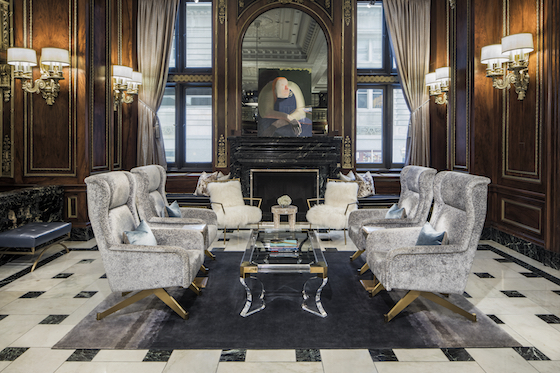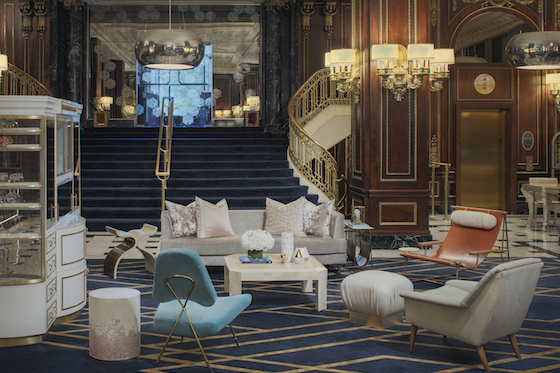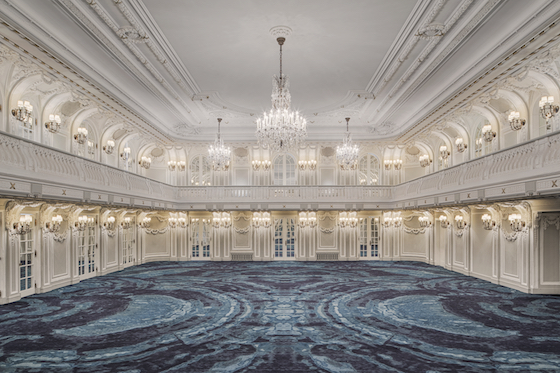Contributed by Chicago-based hospitality design firm The Gettys Group’s Principal Meg Prendergast and Project Designer Ali Bacon
“What’s old is new again.” It’s an adage we’ve heard time and time again, but at this point in history, we’ve found new ways to embrace design that is referential to the past – whether it’s through fashion, graphics, products or interiors. Shifts in technology, politics and culture have compelled us to seek solid ground and connect with simpler times. The hospitality industry’s response to these shifts is, in part, an expanded effort to convert or restore historic properties with fresh design and rich storytelling.
Hospitality designers are often tasked with breathing new life into projects, but in a historic hotel, the renovation process is incredibly nuanced. Striking a balance between old and new is a challenge in any space, and preserving landmarked architectural features can test the creativity and resourcefulness of designers and property partners.
Since our interior design team recently refreshed a historic mansion guest house in Napa, converted an Art Deco tower in Columbus, Ohio, and reimagined a storied hotel property in Chicago, a few key strategies have emerged that increase functionality, improve the guest experience and drive return on investment.

Embrace the architectural bones
While designers might appreciate a clean slate when starting a new project, that isn’t often the reality in a historic space that has been carefully preserved. Restoring and maintaining original finishings are a point of pride for these properties; guests marvel at the hand-carved detailing and well-worn marble alike. And when designers choose to view these features as opportunities, rather than constraints, the result can be even more distinctive and desirable than a ground-up project.
Instead of crafting a design story as a departure from the past, design teams can leverage the property’s unique history, draw inspiration from the original design intent, and aim to reinvigorate the hotel with a modern interpretation of its historic architectural style.
Get creative to solve design challenges
Historic hotels and adaptive reuse projects present unique design challenges that encourage out-of-the-box thinking and solutions that are both functionally sound and additive to the overall guest experience.
Our renovation of the Blackstone Hotel in Chicago presented a multi-fold challenge: The elevator bank was in direct eyesight of the main entrance and the public area was missing a compelling food and beverage offering. To address these concerns, we designed a custom liquor cabinet, dubbed “Timothy’s Hutch.”

The hutch offers an intimate area that activates the lobby of the hotel with cocktail service, while also serving as a division between the elevator landing and main public area. Designed in the same style as 1930s casegoods, the piece is an unexpected, memorable spot for libations and small bites. More than a functional solution, the aesthetic appeal of Timothy’s Hutch is palpable; guests can take in the focal art on the back as they exit the elevators, and ample seating around the front provides visitors with a place to take in the full breadth of the space at their leisure.
Design with modern expectations in mind
Apart from being both practical and beautiful, successful hotels have an experiential quality that makes for unforgettable guest experiences. For today’s traveler, that means surprising, yet purposeful details and “Instagrammable moments.” Creating a functional space with a social media-worthy sheen can be a challenge in historic properties with design constraints. When executed with intention, however, this can be achieved with just one or two selections.
In the Blackstone Hotel’s Crystal Ballroom, we were required to focus on just one design decision: flooring. Because the ballroom has long been a popular wedding venue that serves as a significant revenue source for the property, it was important that we made decisions that would attract couples planning for their big day.

Our team tested an array of popular bridal gown and bridesmaid dress colors against a variety of carpet patterns and shades, ultimately landing on a teal gradient option that pops against any color palette. This attention to detail is vital when opportunities for refreshing are few, as they are the key elements that will enliven the space.
Using an intentional, creative approach, designers can take advantage of the continued trend toward the residentialization of hospitality design and craft a collected, yet practical look that makes space for existing historical features while being fresh and attractive to today’s guest.
